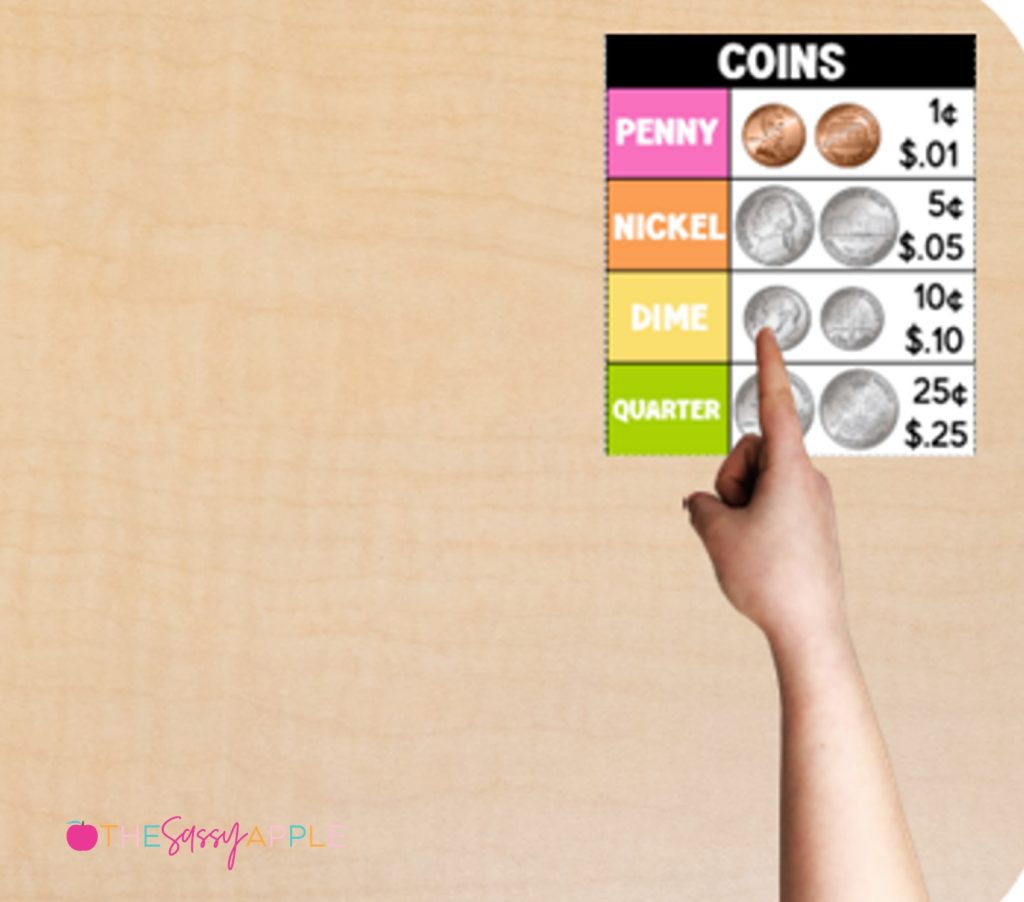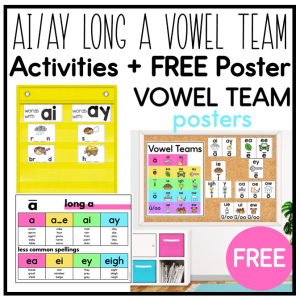Teaching money is a refreshing break from addition and subtraction with regrouping. Counting coins offers countless enjoyable and interactive activities. However, teaching this skill has become increasingly challenging.
Nowadays, students have limited exposure to physical money (thanks to credit cards!). While some students may be acquainted with the names and values of each coin, many still require additional practice to solidify the fundamentals before advancing to counting and making changes. So what’s the best way to teach money? Here are all the tools, ideas, games, and activities I have used over the years!
Explore the Coins
Since fake coins (or real ones, depending on your resources) are so exciting, I always start with some free exploration. I find it’s a good time to review the rules for using manipulatives. Even if you think your kids will be fine, review them anyway. I (very dramatically) share with my students about the time a second grader put a pretend penny in her mouth. I didn’t go over the rules for using manipulatives that year. Now, I always do at the beginning of the year and anytime they are using something new.
While they are exploring, I guide them with questions about what they are noticing. I jot down some notes based on what they know. They sort them. I might give them mini magnifying glasses to look up close. But mostly, they just have some free time which will hopefully get their desire to play with them somewhat out of their system.
Build a Money Anchor Chart
The next step is to collaborate on an anchor chart. I am a firm believer that in order for anchor charts to be most effective, they MUST be made with students. But, that doesn’t mean they still can’t be adorable.

I used Teaching in Stripe’s Money Anchor Chart resource to make this chart with my students. I printed and cut out all the parts. I handed them out (most students had 2 pieces) and then we went coin by coin and discussed all of the information. Students referenced this poster all the time throughout our coin unit.
Provide Visual Supports

Some students need this tool so they have daily, repeated exposure to the coins. I encourage my students to always use their resources and I don’t take them away for assessment.
Review Skip Counting
Okay, now that my students have all the tools they need for success, it’s important that we practice skip-counting. Not just skip counting but switching between counting by 10s, 5s, and 1s. Oh, and we repeat counting by 25s every day, too. My students’ favorite way to practice this is by playing Skip Count, and Switch. It’s super easy:
- Students stand in a circle
- Pick a number between 50-100 as the target number. Let’s say you pick 75, whoever says 75 has to sit down.
- Start counting by 25s or 10s first. Every so often, stop and say “switch” then pick 5s or 1s
- Students are out if they say the wrong number or when they get to the target number.
- Once you get to the target number, start back at 0 and play again (students who were out in round 1 can either get back in or stay out until there is 1 winner)
Track Progress
As I am observing, I can easily group my students by their needs using my guided math group tracking sheets. I have all of the skills for learning money broken down into scaffolded steps. If a student is still struggling with identifying coins by name, then I need to start with that. These tracking sheets break down every 2nd-grade CCSS math standard for easy grouping!

Scaffold Instruction
By this point, I have a pretty good idea about who needs more time with identifying coins and skip counting. Based on my observations, I create small groups for math centers. Usually, I take 2 days to meet with all groups. Within any math unit, I will hold groups 2-3 times. When I meet with each group, we start with labeling the coin by name AND value every time.

Whiteboards are ALWAYS my favorite way to practice math skills–especially at our small group table!
Incorporate Technology
I also love using technology to help scaffold and differentiate. These interactive Google Slides start with identifying the names and values of each of the coins. Then, it moves on to counting groups of the same coins, groups of 2 different coin types, and finally groups of all 4 coins. It’s a perfect practice and assessment tool!

Counting Up Strategy
Now it’s time to count some coins. We start with skip-counting groups of the same coin. From there, I teach my students to order the coins from highest value to least then label them to skip count. This isn’t the only strategy I teach but it is the main one. Once I see who is having difficulty with this, I adjust my teaching to show other strategies like grouping coins or hairy money.

Play Games
Now that my students have been working with coins for a few days, it’s time to play to learn! This is my favorite part of being a teacher–making it fun. We play lots of games!

I introduced coin war in my small groups so I could be sure they were pulling out the correct coins and using strategies for counting.

Race to $1 is perfect for practicing trading and equivalent coins. We play this whole group (students versus teacher) first and then my students play in partners while I am pulling math groups. The directions say to use 1 dice but I have found it takes a loooong time to get to $1 so we sometimes play with 2 dice instead. You can get a copy of the game boards by clicking here.
Make Change
For my students who are “enrichment ready”, I introduce making change. We just finished 2-digit subtraction so their skills are really strong right now. I teach finding change by counting up or setting up a pencil and paper problem. We use this Making Change resource which includes different options for things students can pretend to be buying.

Teaching children about money is an incredibly important life skill. With this list of steps, from beginning coin identification to more complex making change, you are now well on your way to properly educating your students about coins and money. Make sure to grab your free game download so you and your students can start playing Race to $1. Want to read more ideas for teaching math? Try out these blog posts! Happy Teaching!






